Key takeaways
- Engagement on Instagram ads transcends likes and comments; it involves deeper interactions like saves, shares, and audience participation through storytelling and interactive elements.
- Tracking key metrics like engagement rate and click-through rates is crucial for understanding ad performance and making informed adjustments to improve conversions.
- Utilizing tools such as Facebook Ads Manager and third-party analytics can enhance audience targeting and reveal actionable insights, boosting overall engagement.
- Flexibility and responsiveness to audience feedback are essential; adapting strategies based on performance helps maintain fresh and effective ad content.
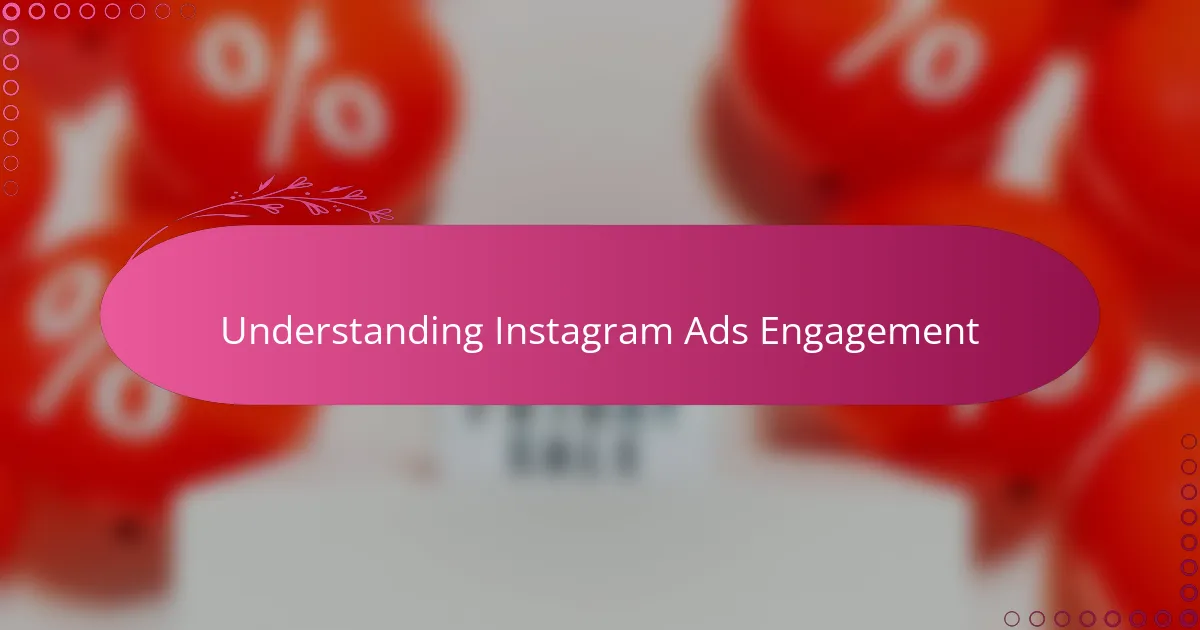
Understanding Instagram Ads Engagement
Engagement on Instagram ads isn’t just about likes or comments; it’s about creating moments where users pause, react, or even share. I remember running a campaign where a simple question in the caption sparked a flood of responses, turning an ordinary post into an interactive experience. Doesn’t it make you wonder how much more powerful your ads could be if they truly connected?
From my experience, understanding engagement means looking beyond surface metrics. It’s about noticing how the audience interacts—do they click through, save, or tag friends? These subtle behaviors often reveal more about their interest and intent than just the number of likes.
What really struck me was how different types of content influence engagement differently. For example, Stories tend to drive quick interactions, while carousel ads invite deeper exploration. Grasping these nuances allowed me to tailor my approach, turning passive viewers into active participants.
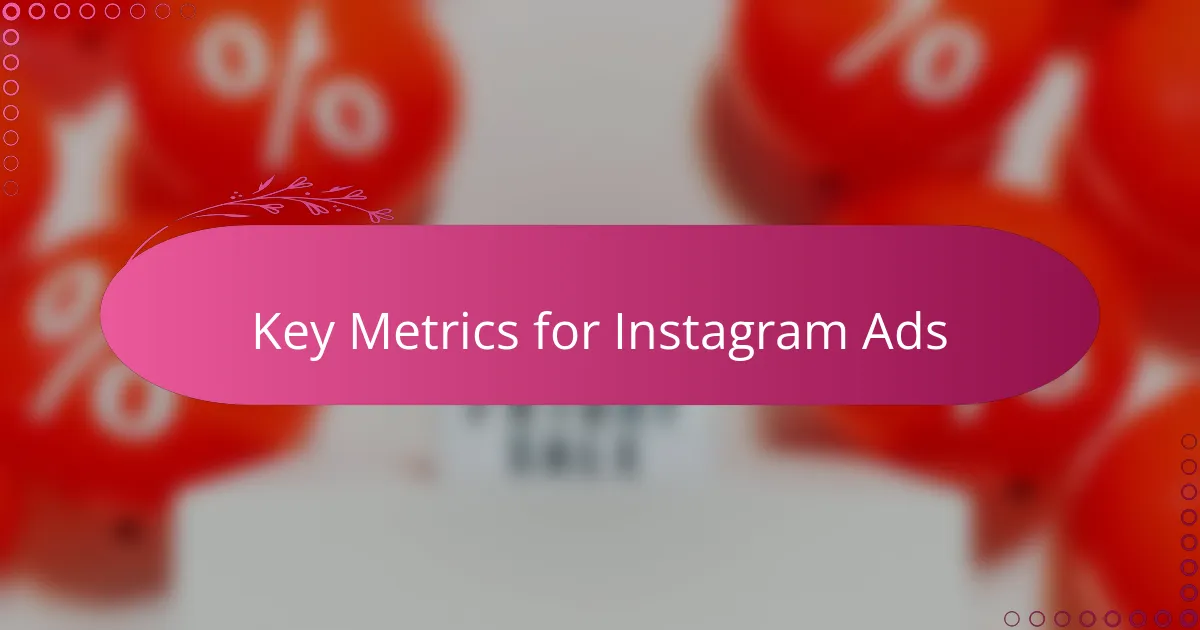
Key Metrics for Instagram Ads
When I first started tracking Instagram ad performance, I quickly realized that metrics like reach and impressions only told half the story. What really mattered to me was the engagement rate—how many people actually interacted with the ad versus just seeing it. It’s a powerful metric because it reveals whether your content is resonating or just fading into the background noise.
Clicks and click-through rates became another eye-opener. I learned to pay close attention not just to how many people clicked, but where they clicked and what actions followed. For instance, a high click rate that didn’t convert into follows or sales signaled to me that maybe the landing page or call-to-action needed tweaking.
Saves and shares always fascinated me the most. When an ad is saved, it tells me that the content has ongoing value, while shares indicate that the message is strong enough for people to want to spread it. Have you noticed how much more rewarding it feels when someone thinks your content is worth sharing? That kind of genuine engagement is gold in my book.
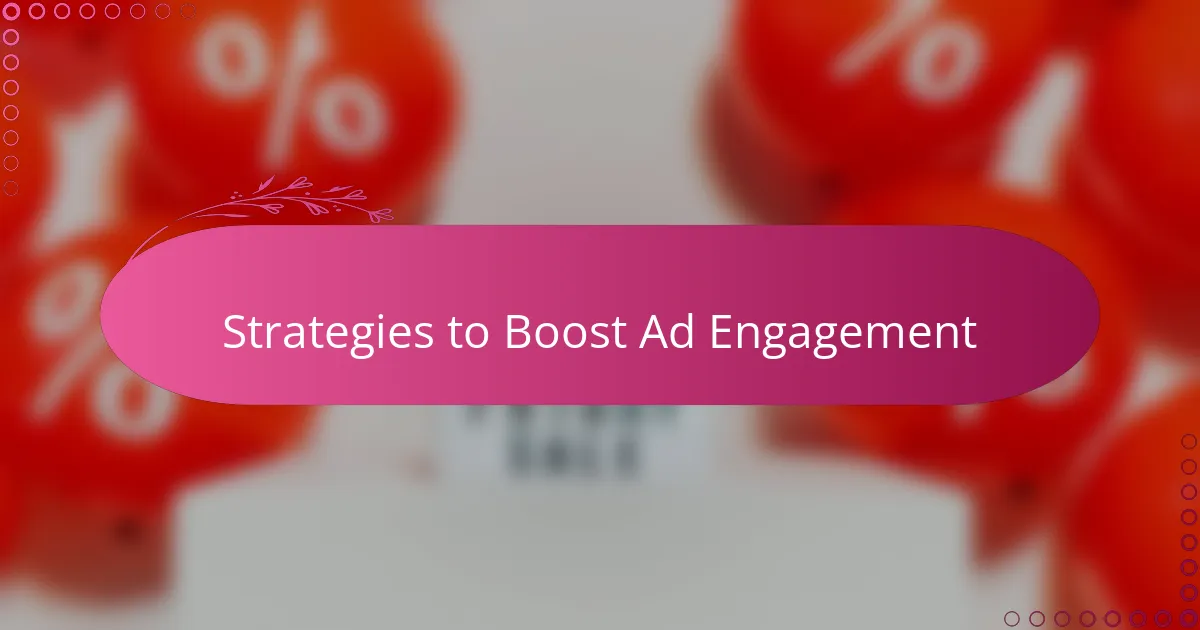
Strategies to Boost Ad Engagement
One strategy that I found incredibly effective was tapping into storytelling. Instead of bombarding users with hard sells, I crafted ads that told a mini story or posed a relatable problem. When people see themselves reflected in an ad, they’re way more likely to stop scrolling and engage—whether that means liking, commenting, or even sharing their own experience.
Another approach I swear by is using interactive elements like polls, quizzes, or sliders in Stories ads. I remember one campaign where a simple poll asking for opinions doubled our engagement overnight. It felt like inviting the audience into a conversation rather than just broadcasting a message, which really made a difference in participation.
Timing and frequency also played a surprising role. Posting when my target audience was most active led to more immediate reactions, and spacing the ads just right kept them curious without feeling spammed. Have you ever noticed how seeing the same ad too often turns you off? Finding that sweet spot where ads feel fresh yet familiar changed the game for me.
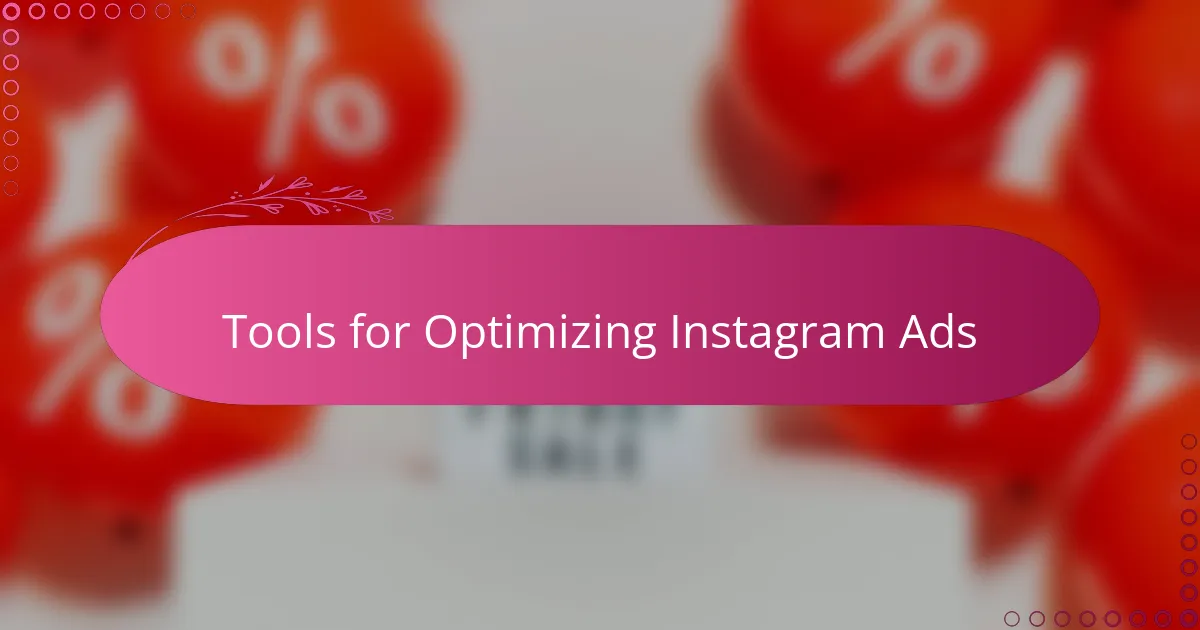
Tools for Optimizing Instagram Ads
When I first dove into optimizing Instagram ads, I quickly realized that relying solely on Instagram’s native tools wasn’t enough. That’s where platforms like Facebook Ads Manager came in handy—it gave me deeper insights into audience behavior and allowed precise targeting tweaks. Have you ever felt overwhelmed by ad data? This tool helped me cut through the noise and zero in on what truly affected engagement.
Beyond the basics, I found that using third-party analytics tools like Hootsuite and Sprout Social made a huge difference. These platforms track performance across multiple campaigns and offer detailed reports on engagement trends. I remember one campaign where Hootsuite’s engagement heatmaps revealed posting times I’d never considered, which led to a noticeable uptick in interaction.
And let’s not forget creative tools—Canva and Adobe Spark became my go-to resources for designing eye-catching visuals tailored for Instagram’s unique formats. It was incredible to see how small design tweaks, like bold text overlays or consistent color schemes, boosted engagement. Ever wondered how much good design influences clicks? For me, it’s the silent salesman working behind the scenes.

Case Study of My Instagram Ads
One campaign that stands out in my mind involved testing a series of carousel ads designed to tell a step-by-step story. I noticed that engagement didn’t just increase—it deepened, with users spending more time swiping through each card and leaving thoughtful comments. Have you ever experienced that moment when an ad stops someone mid-scroll? That’s exactly what happened here, and it reinforced how storytelling transforms engagement.
I also experimented with audience segmentation to personalize the messaging, which was a game-changer. By targeting different groups with tailored visuals and copy, I saw a significant jump in saves and shares, proving that relevance truly drives meaningful interaction. It made me realize that treating everyone the same on Instagram is a missed opportunity—knowing your audience intimately is where the magic happens.
One unexpected insight came from reviewing the timing and frequency of these ads. Pushing them during peak hours didn’t always yield the best results; instead, ads that showed up just before peak times seemed to catch people at the right moment. This subtle shift increased my click-through rates noticeably and reminded me how small adjustments can have big impacts when optimizing Instagram ads.
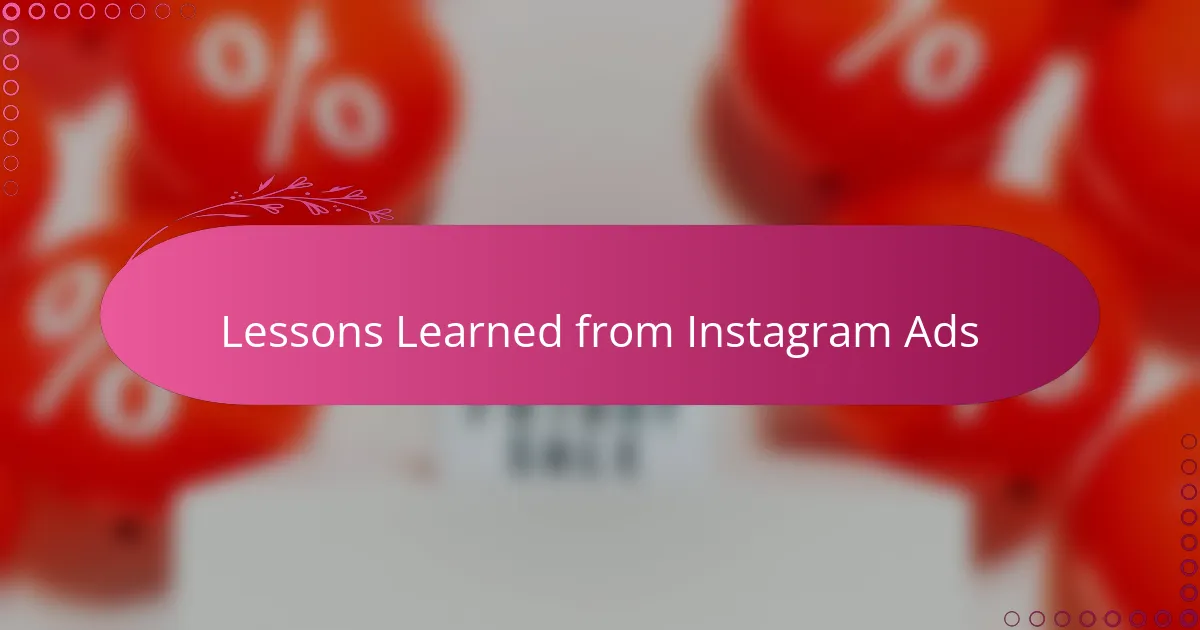
Lessons Learned from Instagram Ads
Looking back, one lesson that really stuck with me was the power of patience. Early on, I expected instant results from every tweak, only to realize that engagement often grows gradually as the audience becomes familiar with the brand’s voice. Have you ever felt frustrated waiting for your ads to gain traction? This taught me to trust the process and keep refining consistently.
I also learned how critical it is to listen—really listen—to the audience’s feedback, whether in comments or direct messages. Sometimes the most insightful clues about what resonates aren’t in the numbers but in the words people share. It made me appreciate that engagement is a two-way street; the best ads feel like conversations, not announcements.
Finally, I discovered that flexibility is key. What worked wonderfully for one campaign didn’t always fit another, so staying open to experimenting with formats, language, and visuals became a vital practice. That willingness to adapt kept the content fresh and prevented my approach from becoming stale. Have you ever stuck with one formula only to see engagement drop? Changing gears can be the difference between a good ad and a great one.